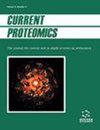耐链霉素结核分枝杆菌分离株膜蛋白分析
IF 0.5
4区 生物学
Q4 BIOCHEMICAL RESEARCH METHODS
引用次数: 0
摘要
耐药结核病仍然是一种卫生安全威胁,对二线药物的耐药性限制了治疗的选择。因此,迫切需要鉴定和表征新的生物标志物/药物靶点。膜蛋白在生物过程中具有预期的作用,可以作为生物标志物/药物靶点。只有在确认阿米卡星耐药时,才推荐链霉素(SM)作为二线治疗方案。由于广泛耐药(XDR)分离株经常对二线注射药物产生交叉耐药,因此建议继续使用SM的潜力尚未开发。本研究旨在利用蛋白质组学方法分析结核分枝杆菌SM耐药分离株膜蛋白的过表达情况。采用超声和超离心法提取膜蛋白。对膜蛋白进行双向凝胶电泳(2DGE),并通过液相色谱-质谱(LCMS)和生物信息学工具进行鉴定。在二维凝胶分析中,发现5个蛋白点在SM耐药菌株的膜上过表达。对接分析显示,SM可能与过表达蛋白的保守结构域结合,而基于群的预测系统原核泛素样蛋白(prokaryotic ubiquitin-like protein, GPS-PUP)预测了其中潜在的化蛹位点。这些蛋白可能对早期发现病例和探索针对耐药结核病(特别是SM)的有效控制策略具有诊断意义。本文章由计算机程序翻译,如有差异,请以英文原文为准。
Analysis of membrane proteins of streptomycin resistant Mycobacterium tuberculosis isolates
Drug resistant tuberculosis remains a health security threat and resistance to second-line drugs limits the options for treatment. Consequently, there is an utmost need for identifying and characterizing new biomarkers/drug targets of prime importance. Membrane proteins have an anticipated role in biological processes and could qualify as biomarkers/drug targets. Streptomycin (SM) is recommended as a second-line treatment regimen only when amikacin resistance has been confirmed. As extensively drug-resistant (XDR) isolates are frequently cross-resistant to second-line injectable drugs, an untapped potential for continued use of SM has been suggested.
The study aimed to analyze the membrane proteins overexpressed in SM resistant isolates of Mycobacterium tuberculosis using proteomics approaches.
Membrane proteins were extracted employing sonication and ultracentrifugation. Two-dimensional gel electrophoresis (2DGE) of membrane proteins was performed and identification of proteins was done by liquid chromatography-mass spectrometry (LCMS) and bioinformatics tools.
On analyzing the two-dimensional (2D) gels, five protein spots were found overexpressed in the membrane of SM resistant isolates. Docking analysis revealed that SM might bind to the conserved domain of overexpressed proteins and Group-based prediction system-prokaryotic ubiquitin-like protein (GPS-PUP) predicted potential pupylation sites within them.
These proteins might be of diagnostic importance for detecting the cases early and for exploring effective control strategies against drug-resistant tuberculosis, particularly SM.
求助全文
通过发布文献求助,成功后即可免费获取论文全文。
去求助
来源期刊

Current Proteomics
BIOCHEMICAL RESEARCH METHODS-BIOCHEMISTRY & MOLECULAR BIOLOGY
CiteScore
1.60
自引率
0.00%
发文量
25
审稿时长
>0 weeks
期刊介绍:
Research in the emerging field of proteomics is growing at an extremely rapid rate. The principal aim of Current Proteomics is to publish well-timed in-depth/mini review articles in this fast-expanding area on topics relevant and significant to the development of proteomics. Current Proteomics is an essential journal for everyone involved in proteomics and related fields in both academia and industry.
Current Proteomics publishes in-depth/mini review articles in all aspects of the fast-expanding field of proteomics. All areas of proteomics are covered together with the methodology, software, databases, technological advances and applications of proteomics, including functional proteomics. Diverse technologies covered include but are not limited to:
Protein separation and characterization techniques
2-D gel electrophoresis and image analysis
Techniques for protein expression profiling including mass spectrometry-based methods and algorithms for correlative database searching
Determination of co-translational and post- translational modification of proteins
Protein/peptide microarrays
Biomolecular interaction analysis
Analysis of protein complexes
Yeast two-hybrid projects
Protein-protein interaction (protein interactome) pathways and cell signaling networks
Systems biology
Proteome informatics (bioinformatics)
Knowledge integration and management tools
High-throughput protein structural studies (using mass spectrometry, nuclear magnetic resonance and X-ray crystallography)
High-throughput computational methods for protein 3-D structure as well as function determination
Robotics, nanotechnology, and microfluidics.
 求助内容:
求助内容: 应助结果提醒方式:
应助结果提醒方式:


